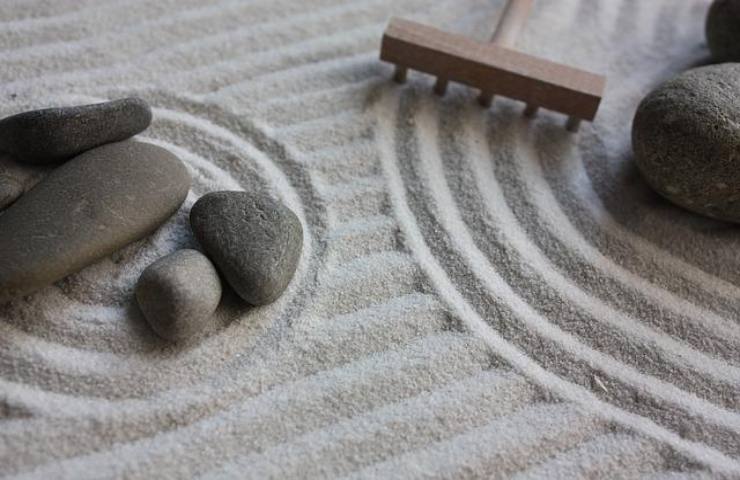Meditating and relaxing in a Zen garden, we can also do it at home, it’s simple, just follow a few tricks
L’Orientin recent years, it has come into our lives and, to some people, it has deeply changed. As far as this practicein different forms, has been recognized for many centuries as an integral part of main religious traditionshowever, it has become an integral part of habits of some, only with the knowledge of Eastern doctrines.
Probably, because they are closer to the feel of people and, above all, they are linked to one distant spirituality from what we were taught as children. The very posture of the oriental meditation it is close to the sense of relaxation and tranquility.
Some tips on how to transform our garden or part of our house into a place of relaxation

The story linked to zen gardensas we westerners conceive them, seems to be considered by Japanese experts a false historian. In fact, they argue that it is our own creation, born in 20th century.
More precisely, the zen termappeared for the first time in a 1935 paper that dealt with Japanese gardens, and only in 1958 it was used in Japan, probably by one scholar who wanted to use it because in rowing among foreigners.
However, beyond what the historical texts report to us today when it comes to Zen gardenit evokes a place of peace and tranquility. A place where you can meditate and relax away from the noise of the city and the modern life.
If we are lucky enough to live in a house surrounded by a gardenNo matter whether it is big or small, we can design and build our own shelter inspired by the Japanese technique. The rules to follow are few. L’fundamental element it’s our fantasy.
YOU MAY ALSO BE INTERESTED IN: False Papyrus, growing it is really simple: all the steps to follow
THE four elements to keep in mind when decorating a Zen garden are: i stonesthe plantsome oriental artifacts and thewater. The shape we will give to our garden will be the result of our ideas. The result must lead harmony and balance.
Once decided where to build your own oasis of peace, it is good to focus thinking about what we want obtain from our zen garden. The four elements that I have indicated above have a symbolic meaning accurate.
L’water symbolizes life. There would be no animate and inanimate living being without the possibility of quenching one’s thirst. The stones are the obstacles that each of us encounters almost every day. Small or large, the our task is to overcome them. The plant they are the life that continues, that lives on air and on earth and whose choice speaks of us.
Once the main elements have been chosen, we can begin to have fun building our own personal Zen garden. Some recommend placing the fountain immediately, around which the stones and plants will then be placed. There form It depends on us. On the market there are for all tastes.
If the garden allows it, you can choose to insert a bio-pond with a small waterfall. The water must be still or sloping, so that scroll following the rising and setting of the sun, then from east to west. In this case the plants that we can choose are of various types and, in addition to decoration, they help water to always remain fresh and clean.
The stones they must be clear and with a rounded shape. The edges do not bring harmony and can even be dangerous if you walk barefoot. Let’s place them around the bio-pond or inside the fountain.
The plant typical of the Japanese tradition are wisteria, cherry trees, bonsai and Japanese pines, among the flowers peonies, hydrangeas and camellias stand out. Some can be placed in the fountain or bio-pond aquatic plants like water lilies and lotus flowers, which act as a filter and keep the water clean.
YOU MAY ALSO BE INTERESTED IN: Ginger, how to start a home grow: exceptional results
We can also decide to build it directly in the house, if the outdoor space does not allow it. We find the place more congenial and let’s make it as we prefer. Just choose the elements in miniature format: a small Zen fountain, potted flowers or bonsai and candles.
Self we live in a studio apartment, we can buy or build a Zen garden table. Typically a wooden or stone tray covered with white sand. Above are laid some smooth and clear stones and, supported, there is a small one rake wooden. The movement we do for tidy up the sandhas the ability to help us clarify ideas and ward off negative thoughts.
Zen garden, how to recreate a place in which to meditate and relax

